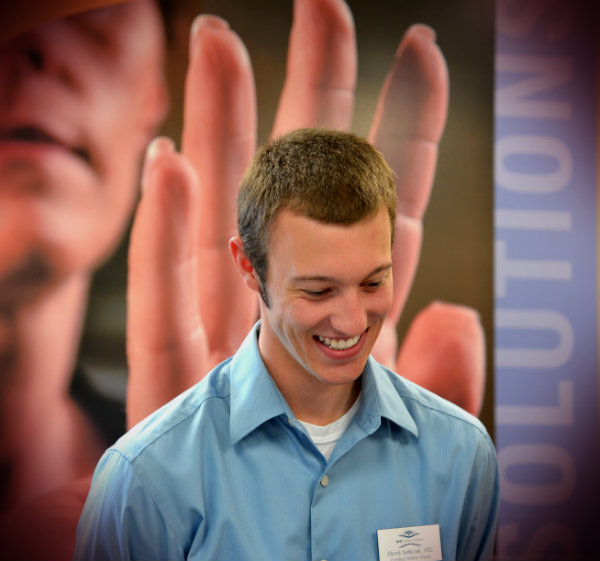Sports Chatter: Patellofemoral Pain in Athletes

Written by Derek M. Sobczak, ATC
A common injury for youth soccer players is patellofemoral pain, which occurs around or under the kneecap. Kneecap tenderness is seen in many youth athletes because of the stress on the knee from constant activity and muscle weakness. Patellofemoral pain is not an acute injury; the ache progresses until it’s excruciating enough to hinder activity. Patella (kneecap) pain can present itself in many forms such as: patellar tendonitis, patellar maltracking, and patellar compression. Patellar tendonitis is an irritation of the tendon that starts at the kneecap and courses through the tibia, or shinbone. The agonizing consequence is a result of running, jumping, or abrupt stopping.
Furthermore, patellar maltracking is a condition in which the kneecap does not ride on the groove to the femur correctly. The incorrect kneecap placement may be caused by muscle imbalance or muscle weakness, and the quad muscles cannot pull the kneecap evenly over the femoral groove.
Another widespread condition is patellar compression: the kneecap is tilted facing the outside of the knee in the femoral groove. Patellar compression is a direct result of a weak VMO muscle (the tear-shaped muscle on the inside of the leg) that cannot control kneecap throughout its range of motion.
Some signs and symptoms of patellofemoral pain include:
- Pain around or under the knee cap
- Pain with increased activity, such as running or walking up stairs
- Weakness in knee, feeling like it is going to buckle or give out
- Usually no swelling is presen
Treatment for patellofemoral pain:
- Modify the activity
- Change footwear
- Ice
- Anti-inflammatory
- Physical Therapy to correct the muscular problem
If your athlete is experiencing any of these problems and they are not getting better, it is recommended that they see an orthopedic doctor to assess the issue. Some athletes will notice an improvement with modified activity and possibly bracing. The athlete can also go to physical therapy and learn exercises to improve muscle strength and muscular balance. Proper physical therapy exercises and modalities are needed to fully correct the underlying problems. With proper treatment, PT Solutions can bring the athlete back to sports with in a timely and safe manner. If you have any questions, feel free to call any of your PT Solutions clinics and bring your athlete in for a free screening.